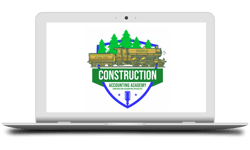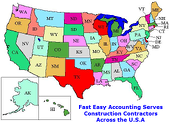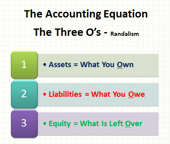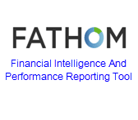As a construction accountant, I've seen it time and again: a small construction company can look wildly successful on paper, reporting healthy profits year after year, yet consistently struggle to pay bills, make payroll, or invest in new equipment. How can this be? The answer lies in a fundamental truth often overlooked in our industry: Cash is King, and profit, while necessary, is usually just a loyal subject, not the reigning monarch.
You can have a profitable project that leaves you cash-strapped, and conversely, a company with lower reported profits might have a healthier bank account. This distinction is paramount, especially for small construction business owners in the U.S., where long project cycles, retainage, and fluctuating expenses can create a perilous gap between what you've earned and what you've on hand.
We often emphasize this critical difference, highlighting that understanding and managing your cash flow is more vital for survival and growth than simply reviewing your profit and loss statement.
Let's dissect why cash truly rules the construction kingdom and how you, as a small business owner, can ensure your crown jewels are liquid and accessible.
The Fundamental Truth: Profit is Theory, Cash is Reality
Imagine you just completed a multi-phase residential renovation with a fantastic 20% profit margin. The client is thrilled, and your P&L looks great. However, if your contract stipulates a 10% retainage held for 90 days after project completion, and you have fronted significant material costs and subcontractor payments early on, your bank account could be dangerously low. You've made a profit, but you don't have the cash to take on the next big job, pay off a critical supplier, or even meet your next payroll.

Profit is an accounting concept that measures revenue minus expenses over a period. Cash flow, on the other hand, is the actual movement of money into and out of your business. In construction, where expenses often precede revenue, and payments can be delayed (especially with retainage), managing this cash flow is the difference between thriving and merely surviving.
Pillar 1: Sharpen Your Job Costing – The Cash Flow Compass
The journey to healthy cash flow begins long before the first shovel hits the dirt. It starts with accurate job costing. As a bookkeeper, I can tell you that flawed estimates are a silent killer of cash flow. If you underbid because you didn't accurately track the actual costs of labor, materials, equipment, and subcontractors on past projects, you're starting in a hole.
- Know Your Numbers: Every single dollar spent on a project needs to be meticulously categorized and tracked against that specific job. This includes direct costs (labor hours, particular materials, subcontractor invoices) and even allocated overhead.
- Real-time Tracking: Relying on memory or spreadsheets at month-end is insufficient. Utilize accounting software (like QuickBooks Desktop or Online, which are excellent for construction) to input costs as they occur. This gives you a real-time snapshot of your project's financial health.
- Inform Your Bids: Accurate historical job costing data is your most powerful tool for future bidding. It allows you to create realistic estimates that cover all costs and include a healthy profit margin, ensuring you're not unknowingly funding projects out of your pocket.
Pillar 2: Mastering Your Money In – The Accounts Receivable Offensive
Getting paid for your hard work is paramount. Construction payment cycles can be notoriously long, but proactive management of your Accounts Receivable (A/R) can significantly improve your cash position.
- Structure Progress Payments: For larger projects, avoid waiting until completion for payment. Structure your contracts with clear milestones and associated progress payments. This ensures a steady flow of cash to cover ongoing expenses.
- Timely and Accurate Invoicing: As soon as a milestone is met, an invoice should be generated and sent. Delays in invoicing translate directly to delays in cash. Ensure your invoices are clear, detailed, and accurate to prevent disputes and ensure timely payment.
- Proactive Collections: Don't be afraid to follow up. Have a system for politely but persistently following up on overdue invoices. A friendly phone call or email can resolve issues quickly.
- Manage Change Orders Effectively: Scope creep is common, but unbilled change orders result in lost cash. Any deviation from the original contract scope must be documented, approved by the client, and invoiced before the commencement of the additional work. This is non-negotiable for maintaining a healthy cash flow.
- The Retainage Hurdle: This is the most significant drain on cash flow for many construction companies. Retainage (typically 5-10% of the contract value) is held by the client until project completion and often for an additional period after.
- Track It Meticulously: Your accounting system must indicate the amount of retainage outstanding for each project.
- Know the Release Triggers: Understand the exact conditions for retainage release in your contract (e.g., final inspection, lien waivers from all subs).
- Proactively Pursue Release: As soon as conditions are met, submit all necessary documentation to trigger the release of retainage. Don't wait for the client to remember. This often involves certified payrolls, closeout documents, and other compliance paperwork, especially on government contracts.
Pillar 3: Strategic Spending – The Accounts Payable Defense
While getting cash in is vital, managing your money going out is equally important. This isn't about avoiding payments but about optimizing them.
- Negotiate Payment Terms: When establishing relationships with suppliers and subcontractors, negotiate favorable payment terms (e.g., Net 30, Net 45).
- Pay Strategically: Pay your bills within their terms, but don't pay them instantly if you have a longer payment term. Holding onto cash for a few extra days can make a difference, especially when a large payroll is looming.
- Maintain Good Vendor Relationships: A strong relationship with suppliers and subs can provide flexibility when you occasionally need it most. Clear communication about payment schedules is key.
- Prevent Double Payments & Errors: Accurate bookkeeping prevents duplicate payments or payments for unreceived goods or services, which directly impact your cash balance.
Pillar 4: The Growth Conundrum – Cash Flow's Silent Killer
It sounds counterintuitive, but rapid growth can be fatal to a construction company if not managed with an ironclad grip on cash flow. Taking on more projects means:
- More Upfront Costs: Increased material purchases, larger payrolls, and more subcontractor deposits.
- Increased Working Capital Needs: You're funding new work before previous projects have fully paid out.
- Higher Overhead: As you grow, your fixed costs (office, administrative staff, software) also increase, requiring more consistent cash flow.
Many profitable construction businesses have gone bankrupt because they expanded too quickly without sufficient working capital or cash reserves to bridge the gap between expenses and collections.
Pillar 5: Building a Cash Buffer – Your Financial Safety Net
Just as you wouldn't build a house without a strong foundation, you shouldn't run your business without a cash reserve.
- Establish a Cash Reserve: Aim to have enough cash on hand to cover 3-6 months of operating expenses. This acts as an emergency fund for unexpected delays, equipment breakdowns, or economic downturns.
- Line of Credit: While not cash itself, a pre-approved line of credit can serve as a vital backup for short-term cash flow gaps. Use it strategically and pay it down quickly to avoid interest accumulation.
The Bookkeeper's Blueprint: Your Partner in Cash Flow Control
This is where a specialized construction bookkeeping professional becomes indispensable. We don't just record transactions; we are your financial navigators.
- System Setup: We ensure your accounting software (like QuickBooks) is set up correctly for job costing, allowing you to track cash flow at a granular level.
- Timely and Accurate Reporting: We provide regular cash flow statements, not just profit and loss statements (P&Ls), giving you a clear picture of your actual cash movements.
- Cash Flow Forecasting: We can help you build realistic cash flow forecasts, predicting when you'll need cash and when it'll arrive, enabling proactive decision-making.
- Compliance & Best Practices: We help you navigate complex invoicing, lien waiver requirements, and retainage release processes to expedite your payment.
Conclusion
For small construction business owners, believing that "profit is king" can lead to a harsh reality check. The true monarch is cash. By meticulously managing your job costs, aggressively pursuing receivables (especially retainage), strategically managing payables, understanding the cash demands of growth, and building a robust cash reserve, you empower your business to weather any storm and seize every opportunity. Partner with a bookkeeping specialist who understands the unique financial rhythms of construction, and together, you can ensure your company always has the liquid assets it needs to thrive.
About The Author:
![]() Sharie DeHart, QPA, is the co-founder of Business Consulting And Accounting in Lynnwood, Washington. She is the leading expert in managing outsourced construction bookkeeping and accounting services companies and cash management accounting for small construction companies across the USA. She encourages Contractors and Construction Company Owners to stay current on their tax obligations and offers insights on managing the remaining cash flow to operate and grow their construction company sales and profits so they can put more money in the bank. Call 1-800-361-1770 or sharie@fasteasyaccounting.com
Sharie DeHart, QPA, is the co-founder of Business Consulting And Accounting in Lynnwood, Washington. She is the leading expert in managing outsourced construction bookkeeping and accounting services companies and cash management accounting for small construction companies across the USA. She encourages Contractors and Construction Company Owners to stay current on their tax obligations and offers insights on managing the remaining cash flow to operate and grow their construction company sales and profits so they can put more money in the bank. Call 1-800-361-1770 or sharie@fasteasyaccounting.com
OUTSOURCED ACCOUNTING FOR
THE BUSY CONTRACTOR
IN A MOBILE ENVIRONMENT
 |
 |
 |
 |
Download the Contractors APP today from the App Store or Android Store
Access Code: FEAHEROS
Click here to download the App on Android:
Click here to download the App on iOS:
Simply scan the QR code or search for ‘MyAccountants’ in the App Store and enter the Access code: FEAHEROS to utilize the powerful App features and capabilities and benefit from having our Construction Accounting App at your fingertips, 24/7."
PS: Even if you are not a Construction Contractor, you will find plenty of benefits in the app, so we invite you to download it, too! It's Free, so why not?




























